Fire features are increasingly popular in outdoor living spaces across the United States. Whether you're looking to warm up chilly evenings, create a cozy gathering spot, or simply add an element of luxury to your backyard, fire bowls and fire pit tables are two options that often come to mind. But what's the difference between these two? How do you know which is right for your space? In this beginner's guide, we'll explore the distinctions, benefits, and use cases for both fire bowls and fire pit tables.

Understanding the Basics
Before diving into the specifics, it's important to understand what fire bowls and fire pit tables are.
Fire Bowl: A fire bowl is a freestanding, typically circular feature that holds a fire. It often has a simple, elegant design and can be made from various materials, such as copper, steel, or stone. Fire bowls can be fueled by wood, propane, or natural gas.
Fire Pit Table: A fire pit table, on the other hand, is a larger, more versatile piece of outdoor furniture. It combines the functionality of a fire pit with the utility of a table, making it ideal for both warmth and outdoor dining or entertainment. Fire pit tables are commonly fueled by propane or natural gas and come in various shapes, sizes, and materials, including concrete, wood, and metal.
Design and Aesthetics
One of the most noticeable differences between fire bowls and fire pit tables is their design and aesthetic appeal.
Fire Bowls: Fire bowls are often celebrated for their simplicity and elegance. A popular choice among homeowners is the copper fire bowl, known for its beautiful patina over time. Copper fire bowls can be a stunning focal point in any outdoor space, particularly when placed near a pool or in a garden setting. The round shape of fire bowls also allows for a more intimate setting, where people can gather around the fire from all sides.
Fire bowls come in various sizes, from small, portable versions to larger, more permanent installations. A pool fire bowl is an excellent example of a fire bowl that adds a luxurious touch to your swimming pool area, creating an ambient and visually striking feature.
Fire Pit Tables: Fire pit tables offer a different kind of aesthetic appeal. These pieces are not just about the fire; they're also about functionality. The table surface around the fire pit provides a space for drinks, snacks, or even meals. This makes fire pit tables ideal for entertaining guests or enjoying a meal outdoors.
Materials like concrete fire tables are particularly popular for their durability and modern look. Concrete offers a clean, sleek appearance that fits well with contemporary outdoor spaces. Copper fire pit tables are also a great choice for those who appreciate the timeless beauty of copper but want the added functionality of a table.
Functionality
When choosing between a fire bowl and a fire pit table, considering how you plan to use the space is crucial.
Fire Bowls: Fire bowls are more straightforward in their functionality. They’re primarily used for creating a warm, inviting fire. If your main goal is to have a fire feature that acts as a focal point and provides warmth, a fire bowl might be the perfect choice. Fire bowls are also more portable than fire pit tables, especially smaller versions. This portability allows you to move the fire bowl to different locations in your yard, depending on where you need the heat or ambiance.
Gas fire bowls are particularly convenient, offering instant flames with the turn of a knob. This is a great option for those who want the warmth and ambiance of a fire without the hassle of managing wood or dealing with ashes
Fire Pit Tables: Fire pit tables, on the other hand, are multi-functional. They not only provide a fire for warmth and ambiance but also offer a table surface that can be used for various purposes. This makes fire pit tables a better choice if you want to use the space for dining, entertaining, or as a general outdoor living area.
Fire pit tables are typically larger and heavier than fire bowls, meaning they are less portable but more stable. A natural gas fire pit table is an excellent option for those who want a permanent installation that offers the convenience of a continuous gas supply without the need for refilling propane tanks.

Fuel Types and Efficiency
Another key difference between fire bowls and fire pit tables lies in their fuel types and efficiency.
Fire Bowls: Fire bowls offer a range of fuel options, including wood, propane, and natural gas. Wood-burning fire bowls are great for those who love the crackling sound and natural aroma of a wood fire. However, they require more maintenance, including cleaning out ashes and ensuring you have a steady supply of wood.
Gas fire bowls, whether propane or natural gas, are more convenient and cleaner to use. Propane fire bowls are portable, allowing you to move them around as needed. Natural gas fire bowls, while less portable, offer the convenience of an endless fuel supply as long as your home is connected to a natural gas line.
Fire Pit Tables: Fire pit tables are most commonly fueled by propane or natural gas. These fuels are efficient and clean, making them ideal for environments where you want to minimize smoke and debris. A natural gas fire pit table is particularly efficient, offering consistent heat output with minimal effort. Propane fire pit tables are also popular for their portability and ease of use.
Both fire bowls and fire pit tables can be fitted with burners that allow for adjustable flame sizes, letting you control the heat output and ambiance of your fire feature.
Safety Considerations
Safety is always a primary concern when dealing with any type of fire feature.
Fire Bowls: Fire bowls, especially those that burn wood, require careful placement to avoid fire hazards. It's essential to keep them away from flammable materials, trees, and structures. When using a fire bowl on a deck or near a pool, consider using a fire-resistant mat or platform to prevent any damage to the surface beneath.
Gas fire bowls offer a safer alternative to wood-burning bowls, especially for use in smaller spaces or areas with strict fire regulations. With gas fire bowls, you don’t have to worry about flying embers or the buildup of ashes.
Fire Pit Tables: Fire pit tables, particularly those powered by propane or natural gas, are designed with safety in mind. They often include safety features like flame guards, auto shut-off valves, and electronic ignition systems that reduce the risk of accidents. However, like fire bowls, they should be placed on a stable, fire-resistant surface and away from any flammable materials.
When choosing a fire pit table, ensure it comes with a UL listing or similar certification to guarantee it meets safety standards. It’s also wise to check your local fire codes and regulations to ensure your chosen fire feature complies with any restrictions in your area.
Cost and Investment
Your budget will play a significant role in deciding between a fire bowl and a fire pit table.
Fire Bowls: Fire bowls are generally more affordable than fire pit tables, making them an excellent option for those who want a fire feature without breaking the bank. The cost can vary widely depending on the size, material, and fuel type. For example, a small, steel fire bowl may be quite inexpensive, while a large copper fire bowl or a custom stone fire bowl can be more costly.
Fire Pit Tables: Fire pit tables are a more significant investment, but they offer additional functionality and aesthetic appeal that can justify the higher cost. Concrete fire tables or copper fire pit tables are typically more expensive due to the materials and craftsmanship involved. However, the added value they bring to your outdoor living space, both in terms of utility and visual appeal, can make them well worth the investment.
Consider the long-term use and how often you’ll be using your fire feature. If you frequently entertain or spend a lot of time outdoors, the higher initial cost of a fire pit table may be offset by its versatility and durability.
Installation and Maintenance
Ease of installation and ongoing maintenance are other factors to consider when choosing between a fire bowl and a fire pit table.
Fire Bowls: Fire bowls are relatively easy to install. Most models are freestanding and simply need to be placed on a stable, fire-resistant surface. Installation is generally straightforward, especially for portable options. Maintenance for fire bowls, particularly gas fire bowls, is minimal. You’ll need to clean the bowl and check the burners occasionally, but otherwise, they require little upkeep.
Wood-burning fire bowls require more maintenance, such as cleaning out ashes and ensuring the firewood is stored properly to avoid moisture and pests.
Fire Pit Tables: Fire pit tables are more complex to install, particularly if you’re working with a natural gas fire pit table that requires a connection to your home’s gas line. This may require professional installation, which can add to the overall cost.
Maintenance for fire pit tables is also a bit more involved. You’ll need to clean the table surface regularly, ensure the burners are functioning correctly, and check for any gas leaks. However, with proper care, a fire pit table can last for many years, providing warmth and enjoyment through countless outdoor gatherings.
Environmental Considerations
Finally, it's important to consider the environmental impact of your fire feature.
Fire Bowls: Wood-burning fire bowls, while providing a traditional and rustic fire experience, are less environmentally friendly due to the emissions produced by burning wood. If you’re environmentally conscious, a gas fire bowl might be a better choice. Propane and natural gas are cleaner-burning fuels that produce fewer emissions than wood.
Fire Pit Tables: Fire pit tables, especially those fueled by natural gas, are considered more environmentally friendly. Natural gas burns cleaner than wood and is often more efficient, reducing your carbon footprint. However, the materials used in the construction of fire pit tables, such as concrete or metal




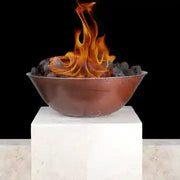


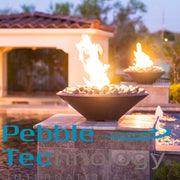


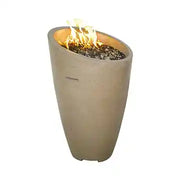






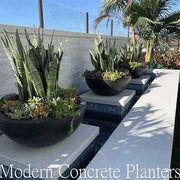






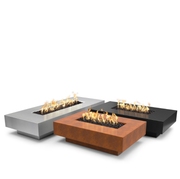











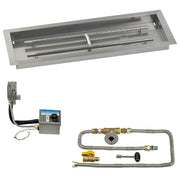



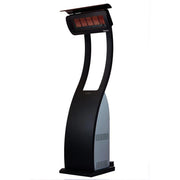
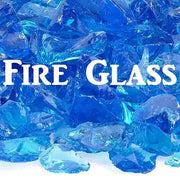





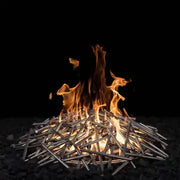
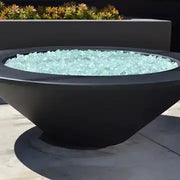




Leave a comment